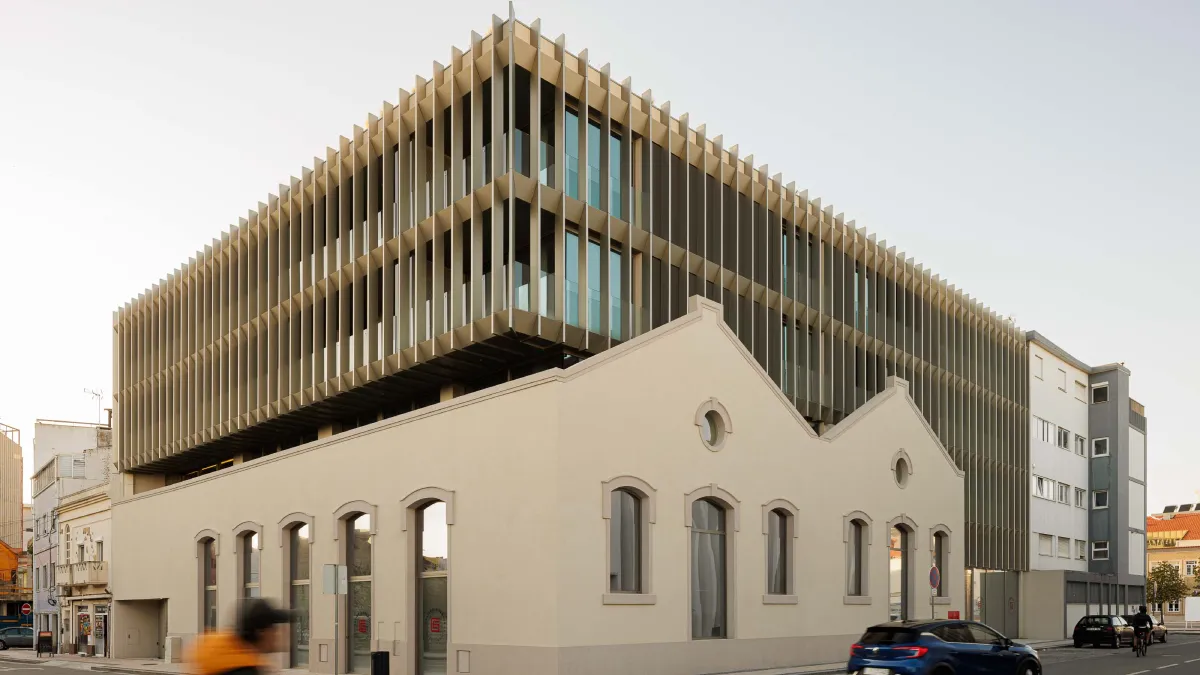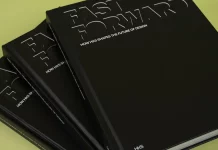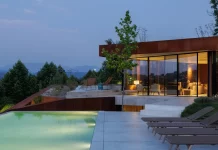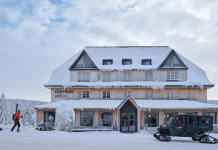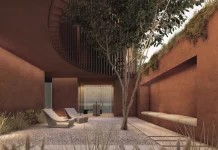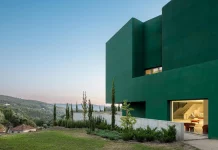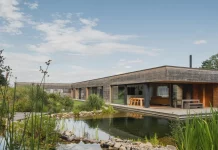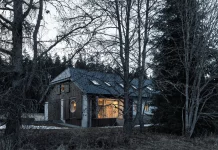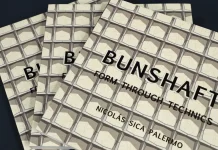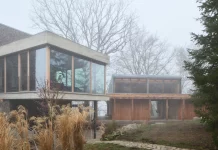In the heart of Aveiro, Portugal, a city celebrated for its charming canals and rich history, a new architectural landmark is redefining the urban landscape. The Edifício Estação, a multi-family housing and commercial project by Sónia Cruz Arquitectura, stands as a compelling example of adaptive reuse. Located near the city’s railway station, this project thoughtfully preserves the memory of its industrial past while introducing a resolutely contemporary vision. Masterfully captured through the lens of architectural photographer Ivo Tavares, the building’s striking design has ignited conversations about the future of historic structures in modern cities. This development is more than just a new building; it is a narrative of evolution, demonstrating how architectural heritage can be honored without hindering progress.
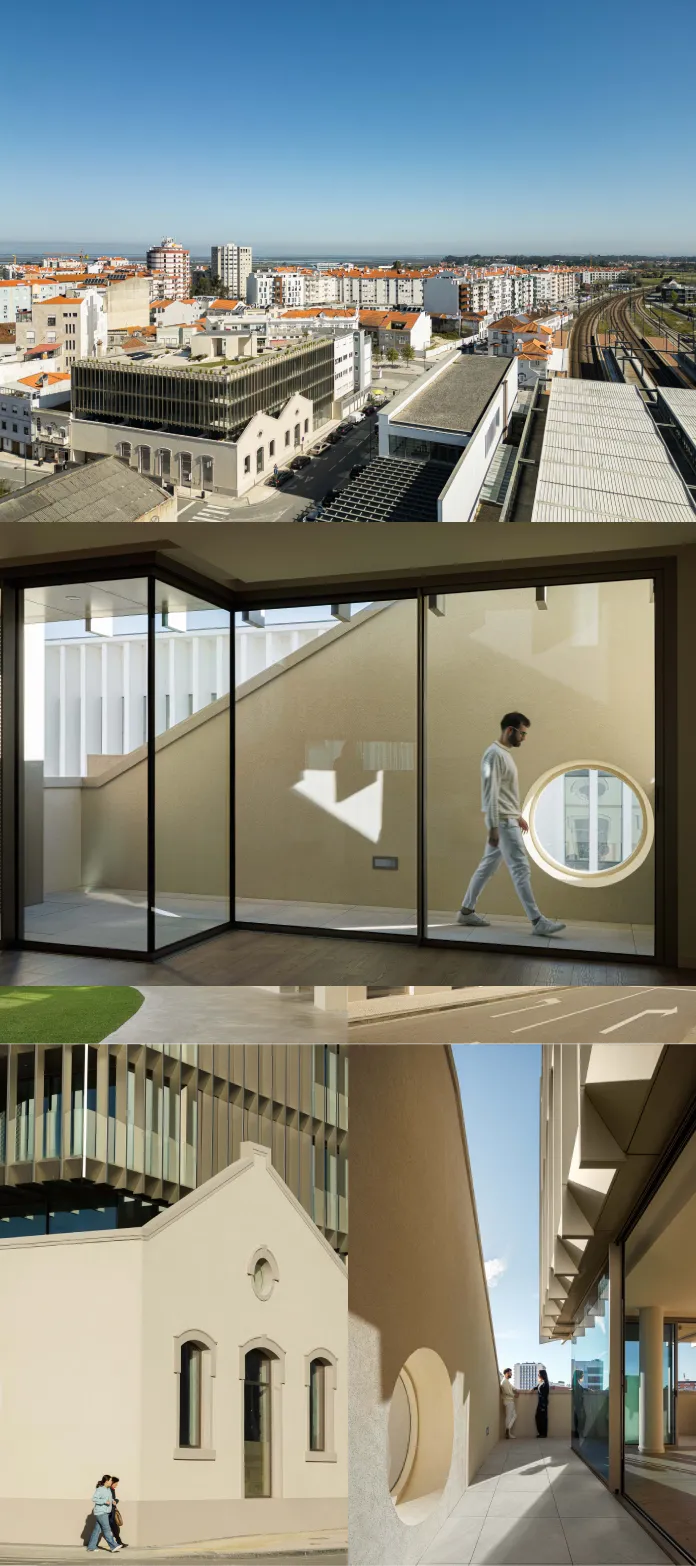
A Dialogue Between Eras: Preserving Aveiro’s Industrial Soul
The story of Edifício Estação begins with its historical context. The project site was originally occupied by two early 20th-century industrial warehouses, which had long been deactivated. These structures were representative of the industrial architecture that once characterized the area surrounding the railway station. The design of their main facades featured a rhythmic composition of windows and doors with raised thresholds, punctuated by a circular window, all typical of the period.
Recognizing the historical and architectural value of these facades, Sónia Cruz Arquitectura made the pivotal decision to preserve and integrate them into the new development. This choice was driven by the belief that retaining these elements would not only enhance the new construction but also preserve a tangible link to the area’s industrial heritage. It is a decision that speaks to a deeper understanding of the city as a layered entity, where past and present can and should coexist.
The Architectural Vision of Sónia Cruz Arquitectura
The primary challenge for the architects was to create a harmonious relationship between the preserved industrial facades and a new, modern structure. The resulting design is a masterful exercise in balance and contrast, creating a symbiotic relationship that respects both the old and the new.
Bridging Old and New: A Symbiotic Approach
Instead of simply building behind the old facades, the design engages in a dynamic interplay of volumes. On one side, the new construction is deliberately recessed from the historic wall, creating a clear visual separation that allows both elements to breathe and be appreciated independently. On the other side, the new volume extends to the edge of the property and projects over the pre-existing facade, aligning with the height of the adjacent buildings.
This strategic push and pull creates what the architect describes as a “void/negative,” a transitional space that is both functional and poetic. This void becomes a private outdoor terrace for the first-floor apartments, ingeniously using the top of the old warehouse facade as a railing. This clever move transforms a design challenge into a unique amenity for residents.
Materiality and Form: A Tale of Two Textures
The dialogue between past and present is further emphasized through the choice of materials. The original facades were restored with their characteristic plaster, painted in a traditional ocher tone with darker accents, retaining their solid, heavy presence.
In stark contrast, the new volume is envisioned as a “lighter, organic, transparent and inevitably contemporary element.” This is achieved through a curtain wall system with vertical elements in anodized aluminum. This modern skin protects a mostly glass facade, giving the new structure an ethereal lightness that contrasts beautifully with the earthbound quality of the historic base. This juxtaposition is not jarring; rather, it creates a rich and impactful architectural composition that enriches the site and its history.
Functionality and Urban Integration: More Than Just a Facade
Beyond its compelling aesthetic, Edifício Estação is a highly functional building designed for modern urban living. The project seamlessly integrates commercial, residential, and communal spaces, contributing to the vibrancy of the neighborhood.
Designing for Modern Life within a Historic Shell
The building comprises four commercial or service units on the ground floor, with fifteen apartments on the upper floors and a common parking area in the basement. The decision to place commercial spaces on the ground floor was a pragmatic response to the constraints of the preserved facades. The high ceilings and large openings of the old warehouses were better suited to a versatile commercial program than to residential use.
Access to the building is carefully considered to serve both residents and the public. The commercial units have direct access from the sidewalk, while a recessed entrance provides a more private approach for residents to the common patio and the vertical circulation core. To maintain aesthetic coherence, new openings for shop windows were created by replicating the form of the original windows on the historic facades.
Reconnecting with the City: Views and Common Spaces
A key feature of the Edifício Estação is its rooftop common space. This area serves a dual purpose, housing a technical area for solar panels while also providing a leisure space for residents. From this vantage point, inhabitants can enjoy exceptional views over the city of Aveiro, fostering a connection to the wider urban landscape. This thoughtful inclusion of communal space adds significant value and enhances the quality of life for those who call the building home.
Why Edifício Estação is a Benchmark for Adaptive Reuse
Edifício Estação is more than an elegant architectural solution; it is a benchmark for how cities can approach the challenge of adaptive reuse. The project demonstrates that preserving historical elements does not have to be a limiting factor. Instead, it can be a powerful catalyst for innovative and contextually sensitive contemporary design.
Sónia Cruz Arquitectura has created a building that is affirmatively contemporary while being deeply rooted in its place. The project successfully adds density and modern amenities to a central urban location without erasing the unique character of the site. It is a testament to the idea that architecture can be a bridge between different eras, creating a final result that is clear, impactful, and enriching. The powerful photography of Ivo Tavares plays a crucial role in communicating this nuanced architectural narrative to a global audience, highlighting the project’s successful dialogue between memory and modernity.
Ultimately, Edifício Estação prompts us to consider the future of our own cities. How can we embrace growth and modernity while honoring the architectural heritage that gives our urban environments their unique identity? This project in Aveiro offers a compelling and inspiring answer.
All images © Ivo Tavares. Feel free to find other inspiring architecture projects here at WE AND THE COLOR.

